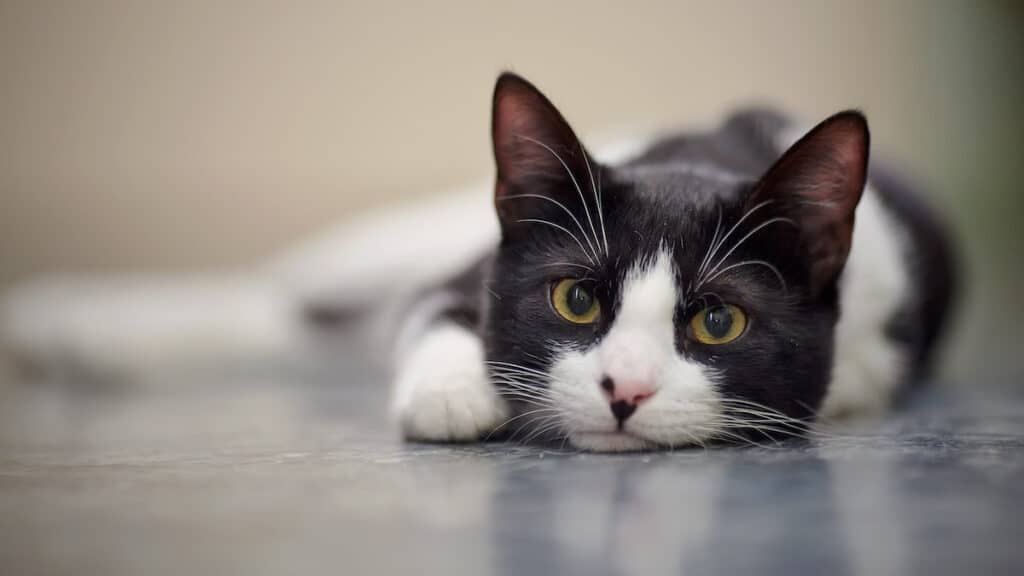Regardless of whether you have a cat or not, you may be interested to know that there are worms in cats. They can be tapeworms, hookworms, or roundworms. While they are not harmful to your cat, they can cause it to become sick.
Roundworms
Among the many parasitic worms, roundworms are the most common. They are found in animals, children, and people. Although it’s difficult to eliminate them, it’s possible to prevent roundworms from occurring. Several medications are available that target various stages of the roundworm life cycle. Keeping your cat indoors is a great way to prevent roundworms.
The most common type of roundworm in cats is Toxocara cati. This parasite can cause gastrointestinal problems. It can be passed from cats to humans. The most common symptoms of roundworm disease in cats include swollen abdominal region, diarrhea, and weight loss.
Roundworms can also be asymptomatic. A few cats may not show any signs, while others may develop diarrhea, loss of appetite, and a dull coat. In some cases, the roundworms can cause blindness if they enter the eyes.
Cats can contract roundworms from infected animals, plants, and soil. They can also be accidentally infected by eating infected prey, such as mice, rats, or cockroaches.
Symptoms of worms in cats
Symptoms of worms in cats can range from dull coats to lack of appetite. Regardless of the symptoms, it’s important to know what to do. The best way to treat worms is to see a veterinarian. Getting the correct treatment can prevent your cat from developing other diseases.
A vet can diagnose worms through a fecal test. Your cat may also need a fecal exam to determine the type of worms he or she has. The type of worms can determine the type of treatment you need.
The most common worms in cats are roundworms and tapeworms. Roundworms are cylindrical, whereas tapeworms are flat. When a cat ingests feces from an infected area, it may pick up worms.
Roundworms can cause a number of symptoms, including weight loss, diarrhea, and lack of energy. If your cat is suffering from roundworms, you may also notice a poor haircoat.
A worm infestation can be very painful for your cat. It’s important to treat worms as soon as possible. This is to protect your cat and other pets.
Tapeworms
Unlike worms that can harm humans, tapeworms are not harmful to pets. However, they can cause a variety of health problems in cats. These include debilitation, diarrhea, and weight loss. Fortunately, there are treatments available to get rid of tapeworms.
Cats can acquire tapeworms through various sources. Some of the most common sources include fleas, worms in rodents, and birds. Cats that live in flea-infested environments are more prone to tapeworms.
Cats can also contract tapeworms through ingestion of infected cat feces. These feces contain segments of tapeworms called proglottids. These segments are 1/8″ (3 mm) wide and can look like small rice-like worms. Usually, they are found in cat feces, but occasionally they can be seen on the surface of fresh feces.
Symptoms of tapeworms in cats include diarrhea, vomiting, and weight loss. Cats with tapeworms may also have an uncomfortable feeling in their anus area, and may lick it often. They may also drag their hind legs across the floor.
Hookworms
Among the most common intestinal parasites of cats are hookworms. They are not visible with the naked eye and usually infect cats by eating other animals or coming into contact with contaminated soil. They are relatively easy to treat.
Symptoms include diarrhea and anemia. Cats with a severe hookworm infection may be hospitalized for treatment. They may also need to have blood transfusions to survive.
Hookworms are relatively easy to treat, but you must act quickly. Kittens infected with hookworms should be treated every two weeks for the first two months, then once a month. Adult cats should be treated once a month or twice a year.
The most common types of hookworms in cats are Ancylostoma tubaeforme and Ancylostoma ceylanicum. Both can cause intestinal blood loss and inflammation of the small intestine.
The Companion Animal Parasite Council recommends that cats be tested for intestinal parasites at least twice a year. The diagnosis is made by microscopic examination of cat feces.














